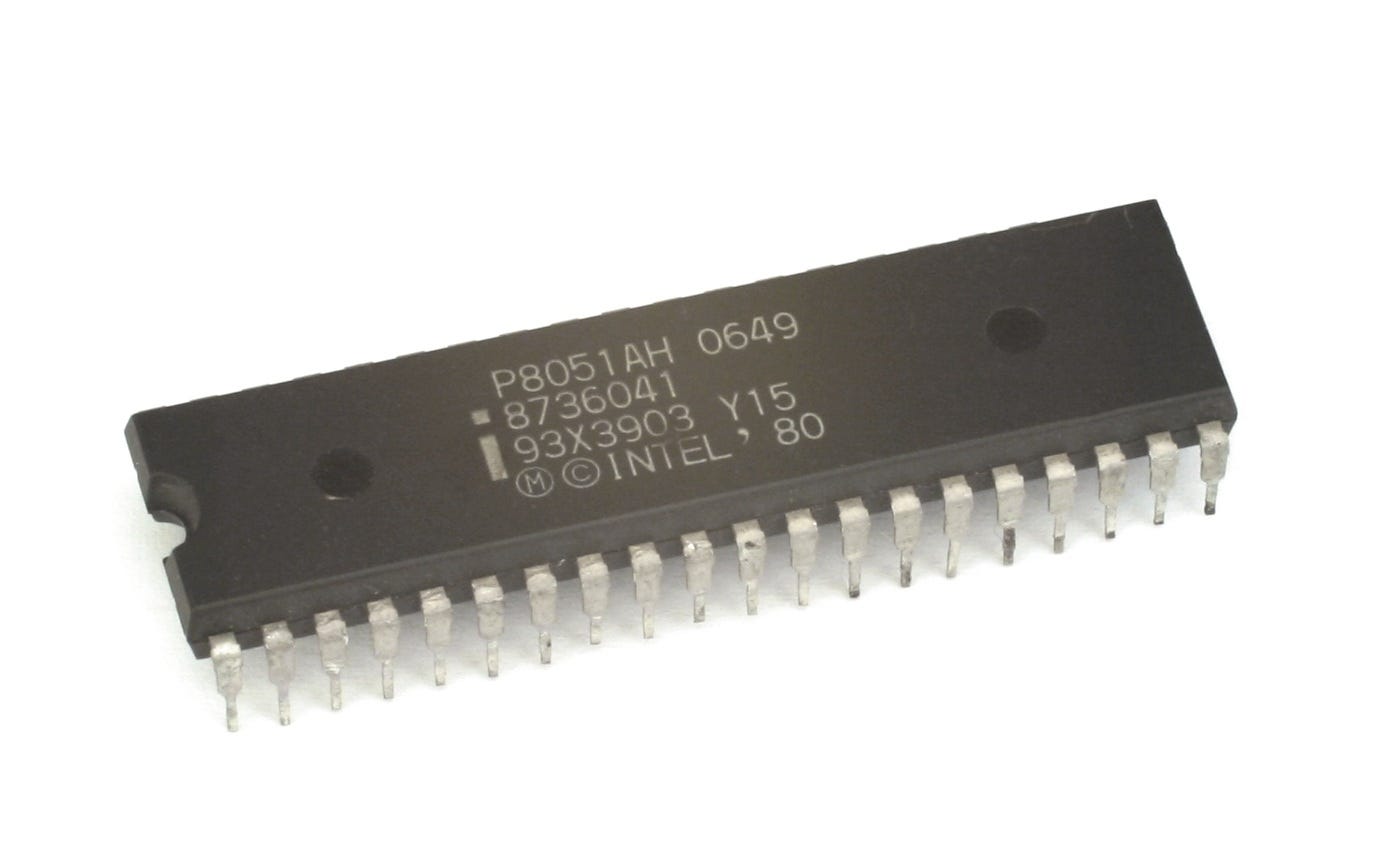In Part 1 of Intel Everywhere we looked at the story of the development of the 8051. This post looks at the architecture of the 8051 series. The final post will consider why the 8051’s architecture has been so successful and why it has lasted more than four decades and continues to be widely used today.
Before we look at the architecture in detail though there are a couple of things to stress. Firstly, the 8051 is highly distinctive compared to the well-known 8-bit architectures that preceded it. It’s not just a 6502 or Z80 with RAM, ROM, and IO added to the chip. It was designed to be an efficient way to meet the requirements of applications that Intel, in the shape of John Wharton, knew customers wanted it for.
Second, the 8051 was not a good design for the CPU in a microcomputer system, and no leading microcomputers used the architecture. This helped Intel distinguish the 8051 from its existing 8-bit microprocessors such as the 8085.
In 2024 the 8051 seems like a relic from a bygone age. It’s still widely used even if it has been superseded for many applications. The fact that it is still useful, though, reminds us that not every application needs a 32-bit RISC CPU.
So what was it that made (and still makes) the 8051 particularly well suited to some ‘microcontroller applications’? The architecture that was described by one of John Wharton’s colleagues as:
.. it was a thing of beauty. It was really an aesthetic thing to look at …
Let’s look at the architecture, starting from the outside.


